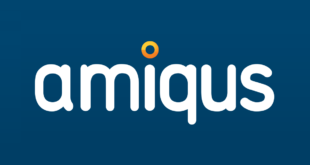What would you pick out as the highlights, either in terms of strategy or products, from your first 18 months at EA Sports?
Strategy-wise I think what Wii was doing was a challenge to us, but you’ll see that the next round of products has a very strong focus on that format.
We’ve also really ramped up what we’re offering online and through DLC.
I’m very proud of Active, I pushed hard for Tennis, as well, so I’m very pleased with that, and pleased that we have all the Grand Slam tournaments in it.
But mostly I’m proud of the quality of our games. Whether it was justified or not, there were question marks in that area, and last year every franchise had Metacritic increases of between two and six points.
What do you think is behind that?
We put a real focus on getting all of our engines up to speed, getting our PS3 games up to 60fps, spending more time on polish. But perhaps most importantly we listened to feedback from the consumer; making sure we put in feature sets that resonated with them.
FIFA’s probably the best example: Be A Pro, 10 vs 10, more recently FIFA Ultimate Team as a download; those things are basically the dev guys reacting to what consumers are saying to them.
And that ties into something else I’m really proud of, which is how we talk to our consumer. Two or three years ago at EA Sports we treated development as a dark art. Maybe three months out we’d let some screenshots be seen, but then it was a massive launch when everything was announced and shown at once.
Now we’re encouraging the developers to talk and listen throughout the process. If you go on our forums you will see healthy debates raging 24 hours a day, 365 days a year between our consumers and our development teams.
Can you tell us how big EA Sports is as a standalone business, and what sort of growth you’re experiencing at the moment?
We’re proud of the fact that we’ve been a billion dollar business for quite a while, and the growth will come from new business. We have our core business, which is FIFA and Madden, but the growth will come from new IP, and we have a lot of that lined up.
Fight Night we count as new business because it’s not iterative, and we’ve just shown Fight Night 4 and got a great reaction. Active has a huge opportunity to be, right out of the traps, a very large and sustainable business.
Tennis, well, it’s the first time EA’s ever done tennis. It’s also the first time John McEnroe has ever been in a game. It’s also important that we have all four grand slams in there.
And we’re fortunate that Nintendo’s working closely with us with Wii MotionPlus. We’d do well with the Wii Remote, but MotionPlus gives it that extra axis of sensitivity, plus we’re able to bundle it with the game and give a discount that makes it half price.
Active is the one that I’m probably most bullish about and which I think will give us the most growth.
Then of course we’re only 12 months away from a World Cup year, which we always have great fun with.
The other aspect is online. FIFA Ultimate Team generated millions of dollars and nobody else has just hosted their 500 millionth game within their brand. Sport is competitive and collaborative, it has to be online and you have to update the content. We have the greatest to gain online and the growth we’ve seen is showing that.
Tell us about the shift in emphasis that’s seen you prioritise Wii.
You can’t ignore the guy who’s got half the business now. So we’ve had to adapt our franchises and our messages.
We’ve been used to using graphics as the selling point for the latest FIFA or Madden. The Wii can’t deliver that, but we’ve come to learn how to adapt to the motion. We had a slow start and maybe we were leading on Xbox 360 and PS3 a few years ago and not paying enough attention to the Wii.
Tiger, EA Sports Active and Tennis will have a strong focus on the Wii. Both Active and Tennis are exclusive – although Tennis will be on Xbox 360 and PS3 later in the year.
We’ve built teams now that have Wii experience, they’re probably working on their third iteration of Wii games and we’ve learnt some hard lessons about how to make our licenses and our gameplay relevant to the Wii consumer.
It’s not about the detail in the shirts and being able to smell the grass anymore. It’s about having fun and how the games feel.
How did Active come about and how important do you think it will become for EA Sports?
I’m very proud of Active. And I’m very cognisant of some of the abuse gaming gets, particularly here in the UK – people saying games are bad for you, especially in the tabloid press and most especially the Daily Mail. So it will be important from that point of view.
Active is also the first game that I was around for its creation. It’s been very interesting to think about how EA Sports starts talking to female consumers.
This is more than a new franchise. I call it a new platform. We’re delighted as it doesn’t canabilise our existing business. I’m not making a FIFA consumer choose between products. This is a wife, girlfriend, mother market.
We spent a lot of time on how to build that brand architecture. It’s bigger than a product, it’s bigger than a brand. In the teeth of a recession, having a personal trainer in a box at $59.95 is a really good deal.
Think of expansion packs: a sport-specific version, core-abs workout, yoga. And we can build and release other peripherals around it. But we wanted a core fitness product first.
We’re also announcing new retail channels for this over the coming weeks. Where can we go with our brand? Stay tuned on that, and think along the lines of this is more than a game.
You must have been delighted with the FIFA ’09 story…
The team did a great job. They double-downed and went early on a new engine that was way ahead of what our competitor was doing. And whilst that was expensive three years ago, I think it put us 18 months ahead of them. It was too big a business not to invest in, and in the last year we sped past our rival.
But, I’ve worked for a Japanese company, I know what the pride level is and I know how they can apply development resources. Commercially we have raced ahead, that is true. We have put some distance between us, but they’re still in the rear view mirror.
Was tennis the last big gap in the EA Sports portfolio?
When I came in we started talking about it, but we wanted to get the grand slams and that hasn’t been done in a long time. It was crucial to get Wimbledon in and complete the set. We did that and then we looked at it and thought, what would be the magic little edge? And we decided John McEnroe was, so we aggressively went after him.
Virtua Tennis ships before us, but we think we’ve got an advantage with the grand slams, we’ve got an advantage with McEnroe and we’ve got an advantage because we’ll be bundling MotionPlus.
What do you think of the idea that the days of proprietary boxes are numbered, and the future being Cloud-based offerings like OnLive?
The current consoles are something of a hybrid, with hard drives as well as disc drives, but discs aren’t going to disappear yet. OnLive is unproven, but it’s an intriguing concept and we’ve stuck our hand up and said ‘we’re interested’.
Your old Sony adversary Phil Harrison said recently that he thinks the generation being born around now will never purchase physical media. Do you agree?
He’s probably right. Whether it’s five or ten years from now, our grandchildren will laugh at the fact that we used to buy a disc with data on it and add it to a collection of lots of other shiny discs.
Finally, who’s been the sports star you’ve most enjoyed meeting?
Probably Tiger. Some of them you meet and you can see how they get their reputation and some of them you’re surprised by. With Tiger, nobody has been more impressive or professional and on a global basis there’s no bigger star.

 MCV/DEVELOP News, events, research and jobs from the games industry
MCV/DEVELOP News, events, research and jobs from the games industry



